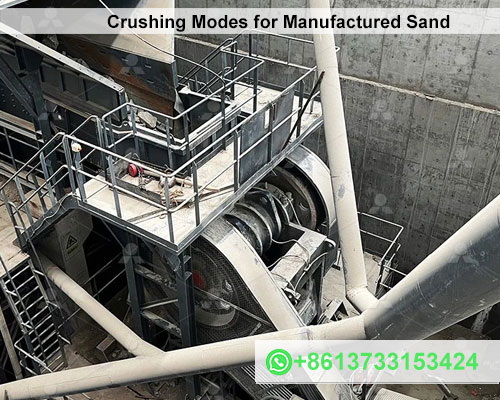Crushing Modes for Manufactured Sand
Manufactured sand, also known as crushed sand, is a type of construction aggregate produced by crushing and grinding rocks, minerals, or concrete waste. It is a valuable alternative to natural sand, which is becoming increasingly scarce and expensive due to environmental concerns. Manufactured sand can be used in a variety of applications, including concrete, asphalt, and mortar.

There are several different crushing modes that can be used to produce manufactured sand. The most common modes include:
- Jaw crushing: This is the most common type of crushing for manufactured sand. Jaw crusher use two opposing jaws to break down rocks into smaller pieces. Jaw crusher are typically used for primary crushing, which is the first stage of the crushing process.
- Cone crushing: Cone crusher use a rotating cone to crush rocks into smaller pieces. Cone crusher are typically used for secondary crushing, which is the second stage of the crushing process.
- Impact crushing: Impact crusher use high-speed impellers to break rocks into smaller pieces. Impact crusher are typically used for tertiary crushing, which is the third stage of the crushing process.
- Grinding: Grinding is the process of reducing the size of rocks into very fine particles. Grinding mills are typically used for the final stage of the crushing process, which is called pulverizing.
The specific crushing mode that is used to produce manufactured sand will depend on the desired particle size and the properties of the raw material. In some cases, a combination of different crushing modes may be used.
In addition to the crushing mode, the quality of manufactured sand can also be affected by the following factors:
The type of raw material: The type of raw material used to produce manufactured sand will have a significant impact on the quality of the sand. For example, rocks that are high in silica will produce sand that is stronger and more durable than rocks that are low in silica.
The fineness of the sand: The fineness of manufactured sand is a measure of the particle size distribution of the sand. Sand that is too coarse will not be as strong as sand that is too fine. The ideal fineness for manufactured sand will depend on the application.
The presence of impurities: Impurities, such as clay and silt, can weaken manufactured sand. The presence of impurities should be minimized to produce high-quality sand.
Manufactured sand is a versatile and sustainable alternative to natural sand. By using different crushing modes and carefully controlling the production process, it is possible to produce high-quality manufactured sand that meets the most demanding specifications.
The crushing mode is an important factor in the production of manufactured sand. The type of crushing mode that is used will depend on the desired particle size and the properties of the raw material. In addition to the crushing mode, the quality of manufactured sand can also be affected by the type of raw material, the fineness of the sand, and the presence of impurities.









